ASK THE MXPERTS: AIR FORKS & SHOCKS GET STIFFER WHEN HEAT IS APPLIED
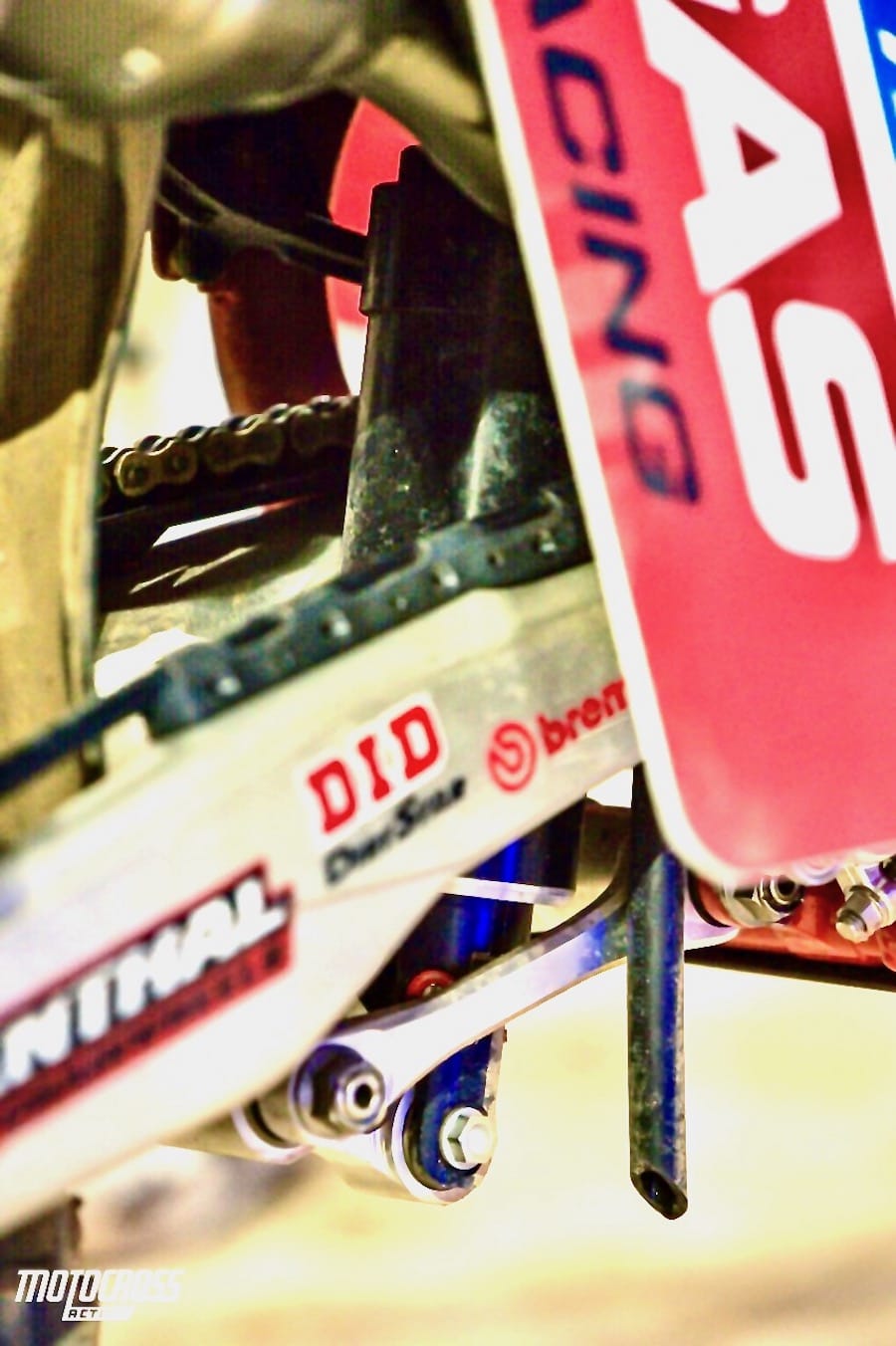
The WP air shock comes and goes, the last time we saw it was during the 2021 Supercross series.
Dear MXperts,
On my air forks, the air pressure rises 4 pounds during a motocross race. This makes the compression damping much stiffer than my initial setting. My solution is to lower the pressure 4 psi from the pressure I want to run, so that when my forks heat up they get to what I wanted originally. My questions are: (1) Is there something internal in the forks that is bad? (2) Is this standard procedure for air forks? (3) Is there a fix for the air forks so the pressure increase will not be so severe?
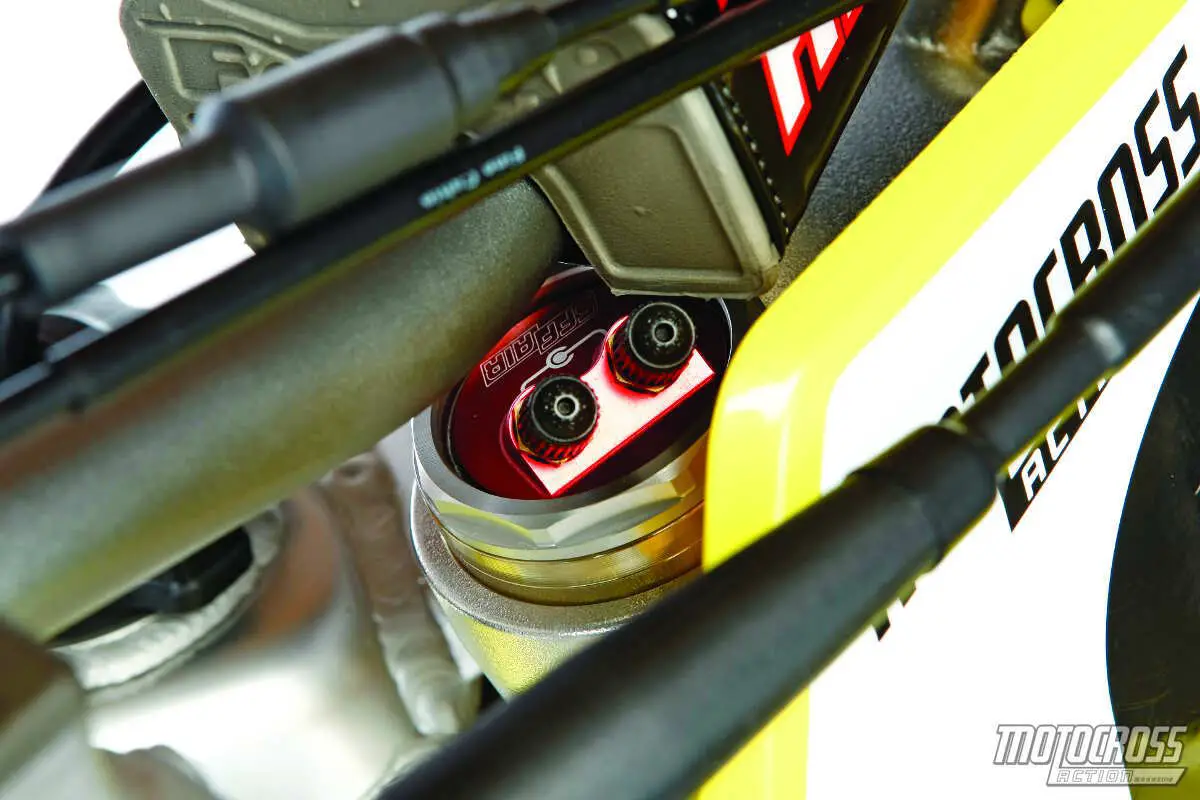 For a five-year period Honda, Kawasaki and Suzuki came with Showa TAC air or Kayaba PS-2 fork. These complicated air forks offered thousands of possible set-ups— most of them wrong. However, many factory riders were running the latest version of these forks on their race bikes in the 202s Supercross and National series. But, only after the WP AER forks from the last three years proved that air forks could be made to work.
For a five-year period Honda, Kawasaki and Suzuki came with Showa TAC air or Kayaba PS-2 fork. These complicated air forks offered thousands of possible set-ups— most of them wrong. However, many factory riders were running the latest version of these forks on their race bikes in the 202s Supercross and National series. But, only after the WP AER forks from the last three years proved that air forks could be made to work.
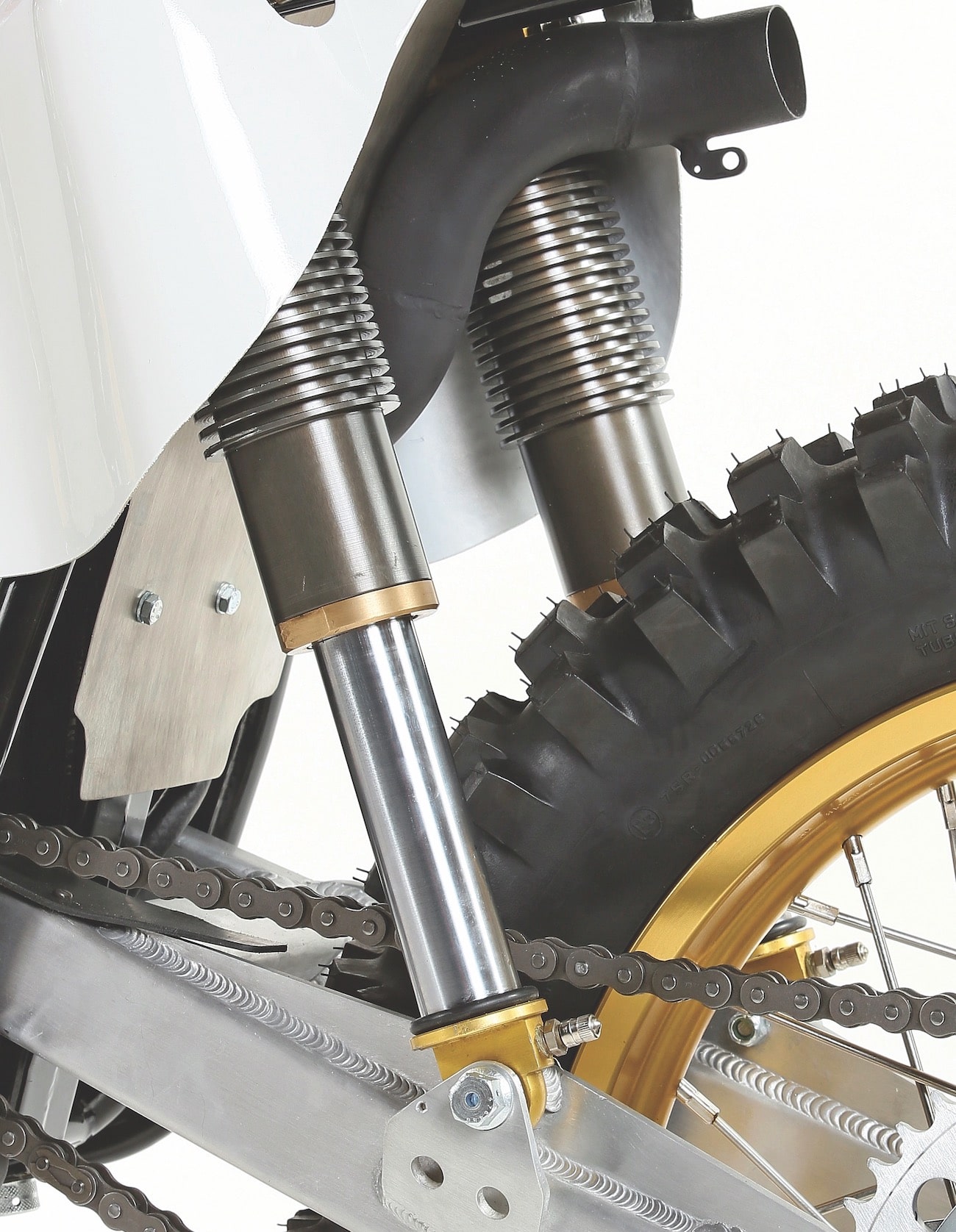 There was a time when Fox air shocks dominated the motocross scene—on the bikes of many factory riders and a lot more privateers.
There was a time when Fox air shocks dominated the motocross scene—on the bikes of many factory riders and a lot more privateers.
The air pressure in both coil spring and air forks goes up as the friction in the fork increases the temperature, which is why all motocross forks have an air bleed screw to bleed off excess air. Since the volume of air in a coil spring fork is much less than that of the air-only leg of a WP XACT fork, the pressure build-up is more noticeable on an air fork. None of this should be unexpected, since the same thing happens to your bike’s tire pressure over the course of a moto.
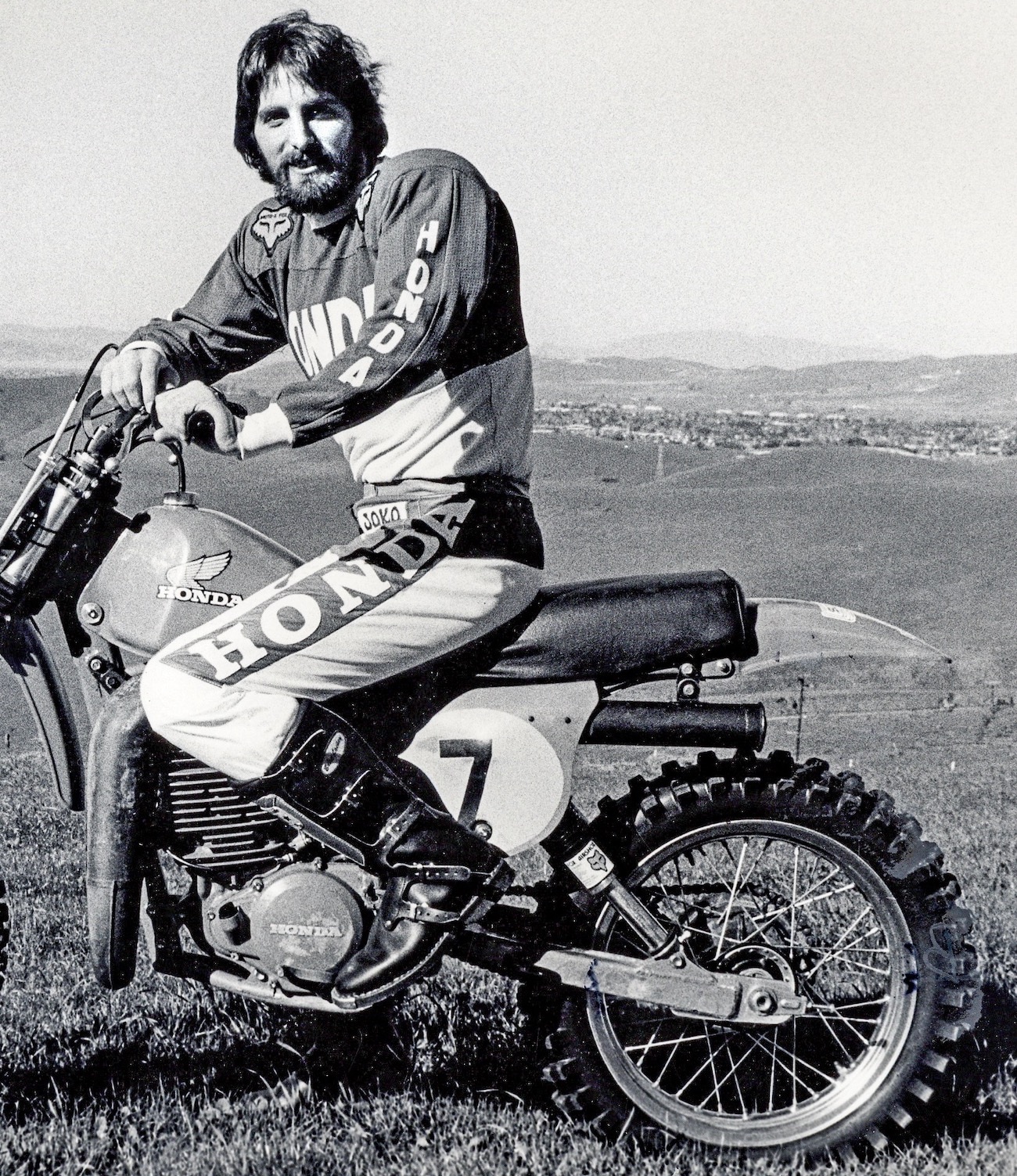 Brad Lackey on his Fox Air Shox equipped factory Honda.
Brad Lackey on his Fox Air Shox equipped factory Honda.
When air gets heated, the molecules start to vibrate and bump into each other, increasing the space around each molecule. Because each molecule uses more space for motion, the air expands and becomes less dense (lighter). In other words, the same number of air molecules must occupy a larger space, which is unavailable in a fork, or increase the air pressure in the same space.
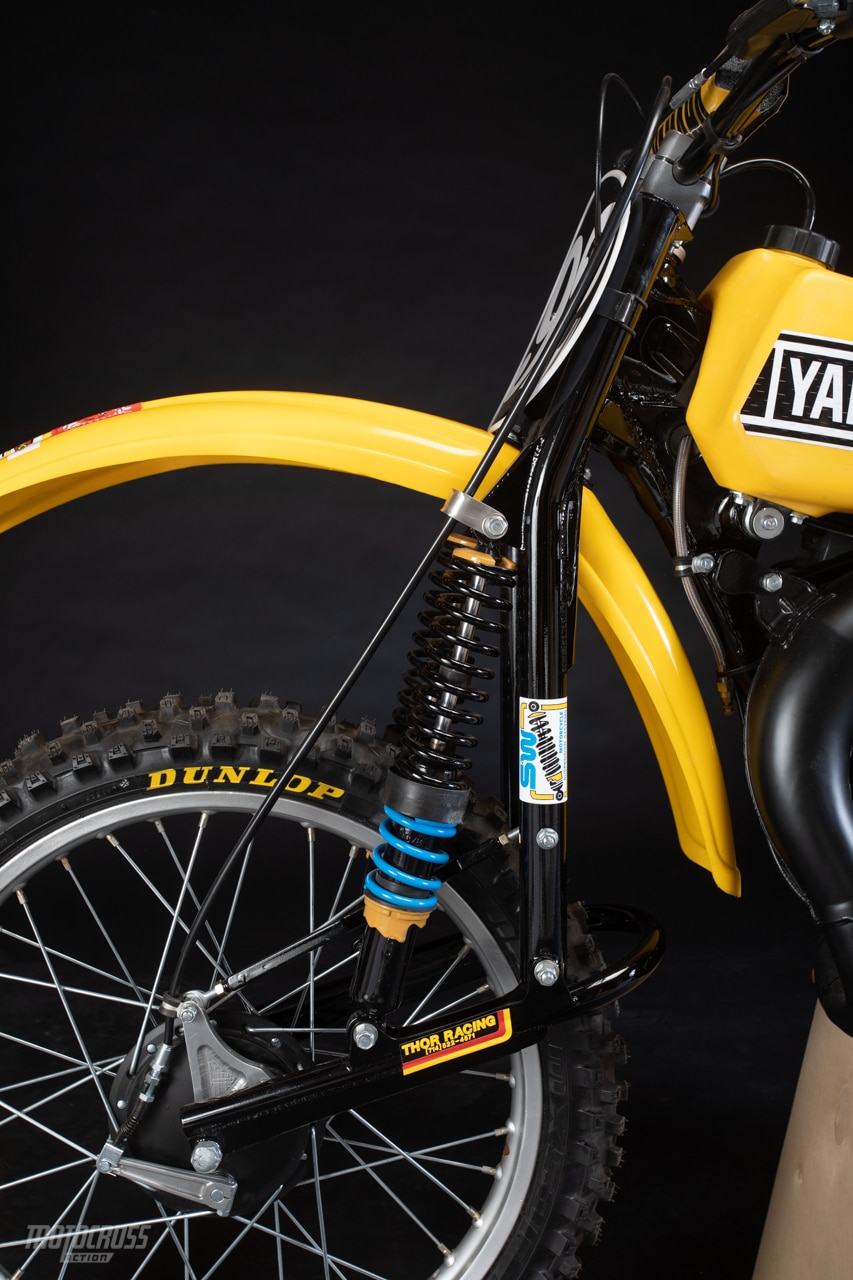
See the braided steel hose coming down from under the gas tank on this 1979 Yamaha YZ125? That is the air hose to charge the Fox Mono Air shock.
Your solution is to start the moto with air forks that are under-sprung so that they will get better as the race goes on instead of having them perfect as the race starts, only to get stiffer late in the moto. That is six of one and half a dozen of the other, but not unheard of,when Fox Factory made an air Monoshock for the 1979 YZ250, it suffered so much heat expansion that YZ racers had no choice but to start the race with very little air in the long Fox Monoshock. If they didn’t, it would be almost rigid late in the moto.
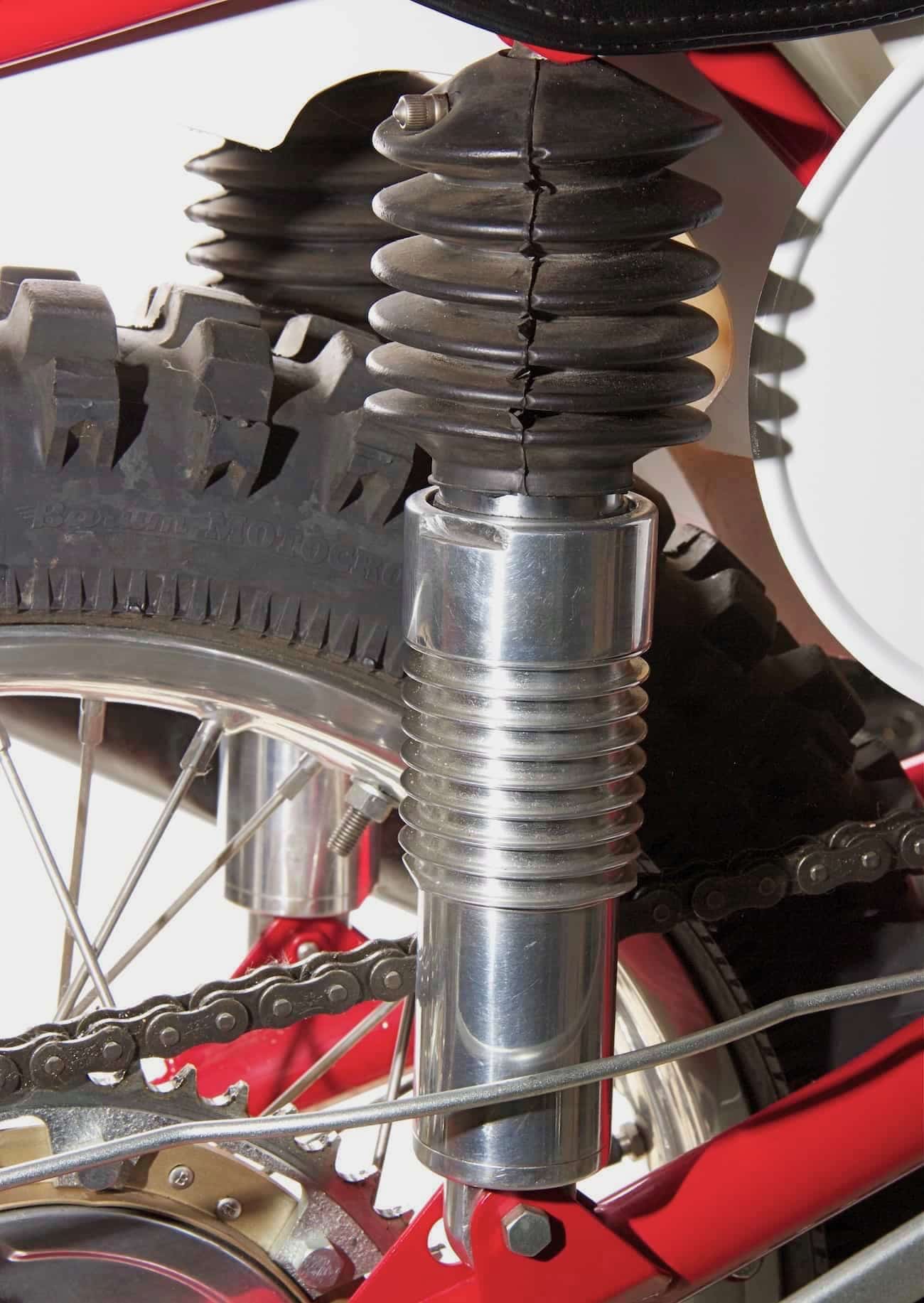 Believe it or not CZ’s 1974 Falta Replica came stock with air shocks.
Believe it or not CZ’s 1974 Falta Replica came stock with air shocks.
As for your three questions, the answers are:
(1) Is something bad? Nothing is “bad” in an air fork to cause this problem. It is just the nature of air molecules. For 2021-2023 KTM, Husqvarna and GasGas were equipped with a new version of the WP XACT air fork that focused on reducing the spikes in both air and oil pressure to produce a much improved ride.
(2) Is this standard procedure? Yes, this is standard procedure for all things that combine air pressure with friction. All forks are air forks, whether they are air-only or coil spring forks. Both types of forks use air to hold the forks up at the bottom of their stroke and any trapped air will expand when it gets hot.
 This is the super-secret WP ACS air shock that failed on Ryan Dungey’s and Andrew Short’s bikes a few years ago. WP took took the regulator off before they allowed MXA to shoot a photo of it.
This is the super-secret WP ACS air shock that failed on Ryan Dungey’s and Andrew Short’s bikes a few years ago. WP took took the regulator off before they allowed MXA to shoot a photo of it.
(3) Is there a fix? KTM spent lots of time trying to develop a way to solve the problem of pressure buildup in its air shock. At one point in the R&D project, WP agreed to let MXA test the WP ACS air shock, while at the same time refusing to let us see the secret shock component that was hidden inside the airbox. It didn’t take a genius to figure out what it was. What was it? It was a pressure regulator. Similar to Georges Jobe’s 1990’s air shock and even to Yamaha’s 1976 speedo and tach forks, the WP ACS shock’s regulator relieved the built-up air pressure by enlarging the air pocket as the air expanded under heat. We weren’t surprised that there was nothing earth-shattering hidden in the airbox. It has all been done before. But the WP regulator, which kept the air pressure in the shock the same as when it started, was kept a secret. The problem for the consumer and the factory race team was that the ACS air shock had a very long teething time, and all the issues were never resolved.
As for the WP air forks, they have improved immensely over the last three years and, performance-wise, they bare no resemblance to the earlier models. Air pressure in both coil spring forks and air forks will always heat up and expand, but WP found several solution to take the spike out of the air pressure.
When KTM put a totally new version of their air shock on a host of KTM and Husqvarna Factory bikes in the 2021 AMA Supercross series. This started the jungle drums beating out the message that KTM was going to come out with and air shock on the 2022 production bikes. We are positive that they won’t do this, but they will keep testing it and someday it will see the light of day.


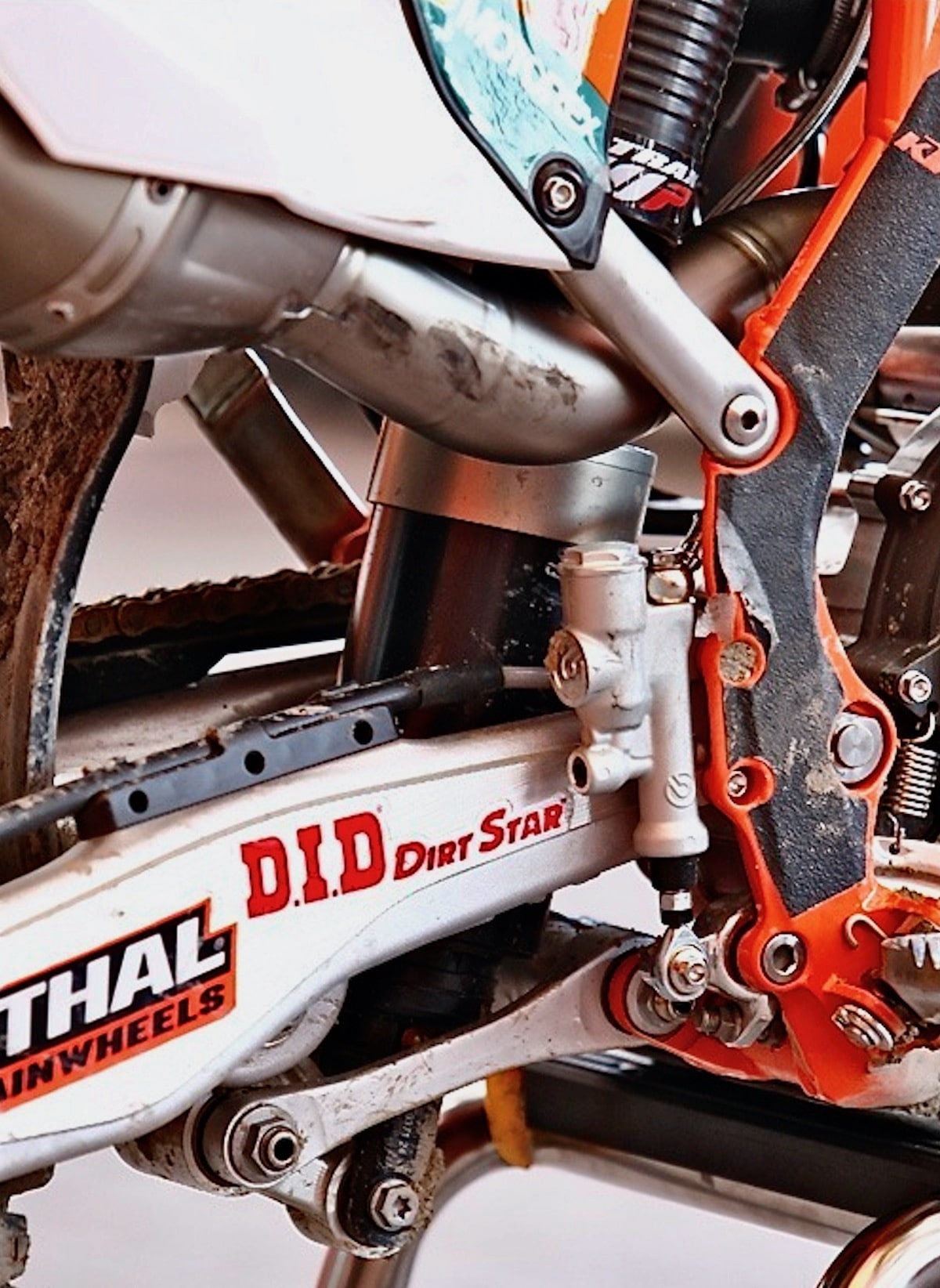



Comments are closed.